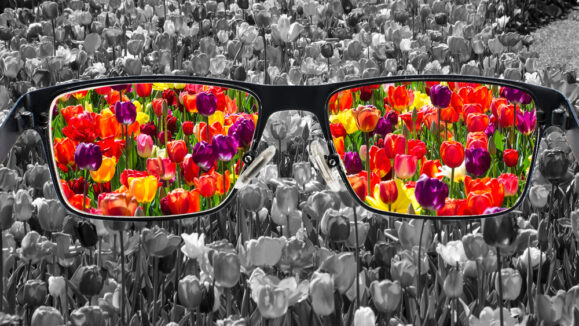There are a number of techniques currently available for the correction of myopia, and orthokeratology is gaining popularity, especially in Asia. The strong body of evidence supporting its efficacy is growing, along with a stead stream of positive anectodal reports from clinicians
With the emergence of new techniques and technologies for myopia correction, millions of people now have the opportunity to free themselves from glasses or contact lenses — for a variety of reasons. Some simply dislike the idea of relying on visual aids like ocular crutches, particularly during sports activities. For others — such as a certain media writer who wishes to fix his eyes because glasses do not complement his overall ‘Viking’ aesthetic — the reason can be more unconventional.
However, many potential patients are still hesitant to undergo permanent myopia correction, often due to misconceptions primarily associated with laser vision correction (LVC). While LVC generally exhibits a high margin of safety and patient satisfaction, it is not difficult to come across sensationalized reports online regarding rare instances of unsuccessful procedures. After all, Dr. Google has become the modern patient’s go-to source for a second opinion.
An alternative to LVC that has gained popularity in Asia among both medical professionals and the community is orthokeratology, commonly referred to as Ortho-K, or corneal refractive therapy. The latter is a trademarked brand name for lenses manufactured by Paragon Vision Sciences (Gilbert, Arizona). It’s similar to champagne, where all champagne is sparkling wine, but not all sparkling wine is champagne. The name Ortho-K has become a commonly used term encompassing a range of products.
Ortho-K: The champagne of optometry
Ortho-K is quite remarkable as it offers a non-surgical therapeutic approach involving reversible tissue manipulation. Patients wear specialized lenses overnight that alter the shape of the front of the cornea via controlled hydrostatic pressure. Ortho-K aims to provide the benefits of successful LVC without the potential complications that concern many patients, as individuals always have the option to revert to normal glasses and contact lenses without permanent changes.1
Dr. Cheryl Chapman, president-elect of the American Academy of Orthokeratology and Myopia Control, is someone who knows a thing or two about myopia and techniques designed to correct it, like Ortho-K. She views the technique as remarkably beneficial for patients as it removes a number of safety concerns they otherwise might have. It’s also a notable advancement compared with previous techniques.
“When Ortho-K was first developed, the lens designs were not as sophisticated as they are today,” Dr. Chapman shared. “The advent of advanced corneal topography that allows practitioners to map the shape of the cornea in great detail along with advances in the equipment that manufactures the lenses has opened many doors. This advanced technology along with the practitioner’s higher level of understanding about lens designs has led to the ability to treat more complex and advanced cases.”
“Ortho-K is an extremely important treatment option and is common in robust myopia management practices due to its ability to treat patients who are not good candidates for other therapies,” Dr. Chapman continued. “I find Ortho-K to be particularly useful with patients that have astigmatism because the daily disposable soft myopia management lenses do not work well with astigmatism cases. Ortho-K is also wonderful for patients that have specific lifestyle goals.”
Who is the ideal candidate for Ortho-K?
Some people want to correct their myopia because of the discomfort they feel while playing sports and wearing glasses. Dr. Chapman said that these individuals are perfect candidates for Ortho-K. She reported that several people at her practice who are involved in high-intensity sports, such as baseball players, gymnasts, swimmers, etc., all reported improved performance when using Ortho-K to manage their myopia.
She also favorably compared it to another myopia management technique, low-dose atropine, as Ortho-K doesn’t require glasses and is a non-pharmaceutical approach.
However, even if a potential patient is the sportiest person alive and just cannot continue with glasses, it is important to note that not everyone is suitable for Ortho-K.
According to Dr. Chapman, good candidates generally need to exhibit good personal hygiene, be highly motivated to adhere to the treatment, and demonstrate good compliance with recommended care and maintenance. Conversely, individuals with irregular sleep patterns, poor hygiene, emotional immaturity, a history of corneal dystrophy or disease (such as herpes simplex, recurrent corneal erosions, keratoconus, endothelial dystrophy, etc.), or corneal scarring should not undergo Ortho-K.
“There are also considerations with regard to the patient’s prescription and cornea shape that can determine candidacy for Ortho-K. Often, the skill level of the specialist in charge influences their ability to treat moderate to high-level prescriptions,” Dr. Chapman clarified.
“Prescriptions that range above -4.00 or have astigmatism greater than -1.50 tend to be more complex,” she added. “The shape of an individual’s cornea can increase complexity and is determined with corneal shape analysis performed by the eye care practitioner with a computerized topographical scan.”
Emphasis on ocular hygiene
“Another concern with Ortho-K, as with other contact lenses, is the risk of eye infection. The safety of overnight Ortho-K wear has been well studied. Bullimore et al. reported that ‘the overall estimated incidence of microbial keratitis (MK) is 7.7 per 10,000 years of wear… the risk of MK with overnight corneal reshaping contact lenses is similar to that with other overnight modalities.’2 The risk is low, but it is extremely important for Ortho-K patients to practice good hygiene,” she reiterated.
Despite these well-placed warnings, however, Dr. Chapman is keen to emphasize the efficacy of Ortho-K. Pointing out that it has been studied extensively, she said that the medical community should have a high level of confidence in the technique.
“Medical research consistently highlights that Ortho-K can slow progression by about half or achieve a 50% reduction in progression,” noted Dr. Champman, adding that many clinicians utilizing Ortho-K designs often observe results that exceed the efficacy reported in the studies.
So, if you have patients who want to correct their myopia but find the idea of LVC to be a bit overwhelming, consider using Ortho-K instead. If patients can maintain a consistent routine of using the lenses at night, they will likely soon experience a significant increase in their quality of life.
This is all great news for sports fanatics wanting to ditch their glasses, and many others.
References
1. Barnard Levit Optometrists. Corneal Refractive Therapy. Available at http://www.barnardlevit. co.uk/contact-lenses/corneal-refractive- therapy-crt/. Accessed on Monday, May 29, 2023.
2. Bullimore MA, Sinnott LT, Jones-Jordan LA. The Risk of Microbial Keratitis with Overnight Corneal Reshaping Lenses. Optom. Vis. Sci. 2013;90(9):937-944.
Editor’s Note: This article was published in COOKIE magazine Issue 12.




